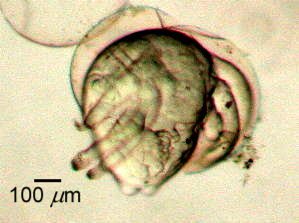Metanauplii on:
[Wikipedia]
[Google]
[Amazon]
 Metanauplius is an early larval stage of some
Metanauplius is an early larval stage of some
 Metanauplius is an early larval stage of some
Metanauplius is an early larval stage of some crustacean
Crustaceans (from Latin meaning: "those with shells" or "crusted ones") are invertebrate animals that constitute one group of arthropods that are traditionally a part of the subphylum Crustacea (), a large, diverse group of mainly aquatic arthrop ...
s such as krill
Krill ''(Euphausiids)'' (: krill) are small and exclusively marine crustaceans of the order (biology), order Euphausiacea, found in all of the world's oceans. The name "krill" comes from the Norwegian language, Norwegian word ', meaning "small ...
. It follows the nauplius stage.
In sac-spawning krill, there is an intermediary phase called pseudometanauplius, a newly hatched form distinguished from older metanauplii by its extremely short abdomen
The abdomen (colloquially called the gut, belly, tummy, midriff, tucky, or stomach) is the front part of the torso between the thorax (chest) and pelvis in humans and in other vertebrates. The area occupied by the abdomen is called the abdominal ...
. In some species, this form is not considered a separate developmental stage as it develops into a metanauplius without molting
In biology, moulting (British English), or molting (American English), also known as sloughing, shedding, or in many invertebrates, ecdysis, is a process by which an animal casts off parts of its body to serve some beneficial purpose, either at ...
; in other species such as ''Nyctiphanes couchii
''Nyctiphanes'' is a genus of krill, comprising four species with an anti-tropical distribution. Based on molecular phylogenetic analyses of the cytochrome oxidase gene and 16S ribosomal DNA, ''Nyctiphanes'' is believed to have evolved during t ...
'', it can be separated from the metanauplius stage by the molt of a very thin cuticle soon after hatching.
Broadcast-spawning species of krill do not have a pseudometanauplius stage. They generally hatch in the nauplius 1 stage, but recently have been discovered to hatch sometimes as metanauplius or even as calyptopis stages.
See also
*Crustacean larvae
Crustaceans may pass through a number of larval and immature stages between hatching from their eggs and reaching their adult form. Each of the stages is separated by a moult, in which the hard exoskeleton is shed to allow the animal to grow. The ...
Footnotes
References
{{reflist, 2 Crustaceans Krill Larvae